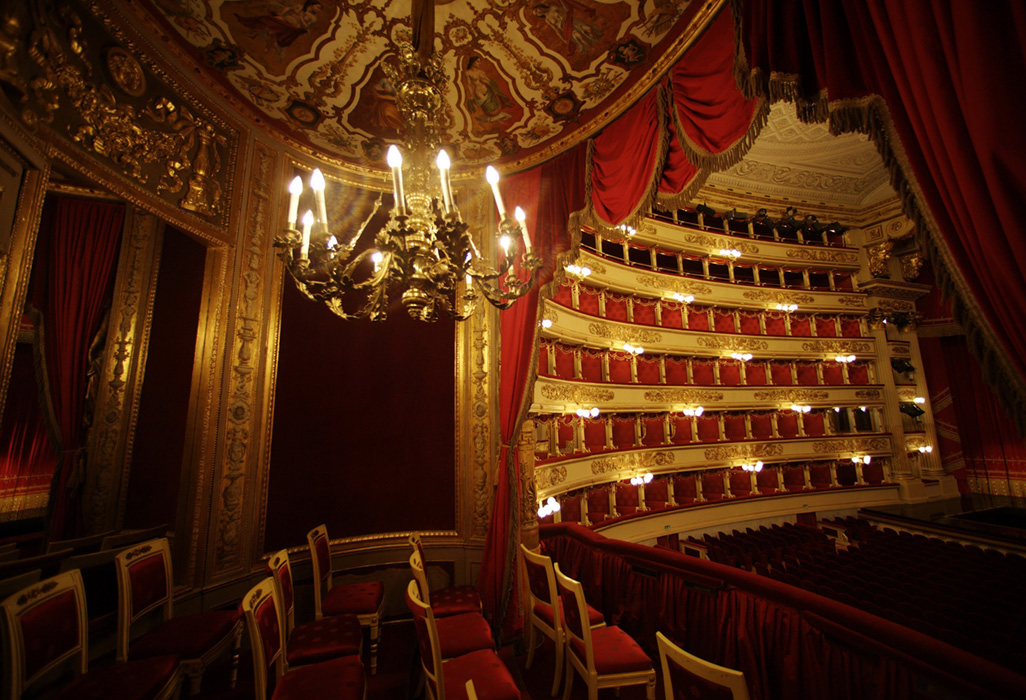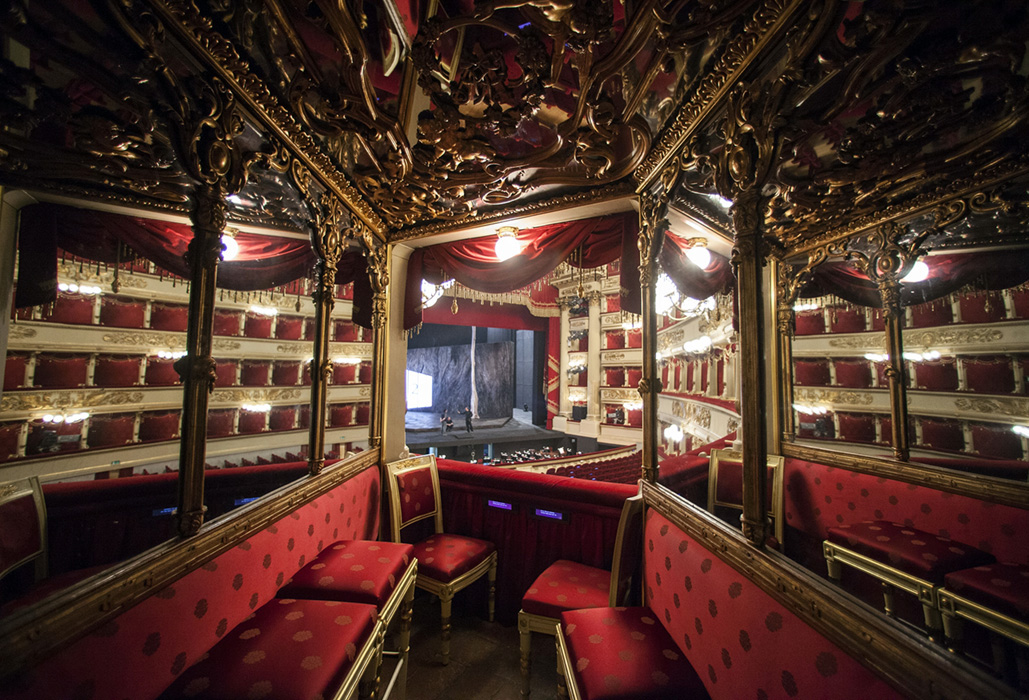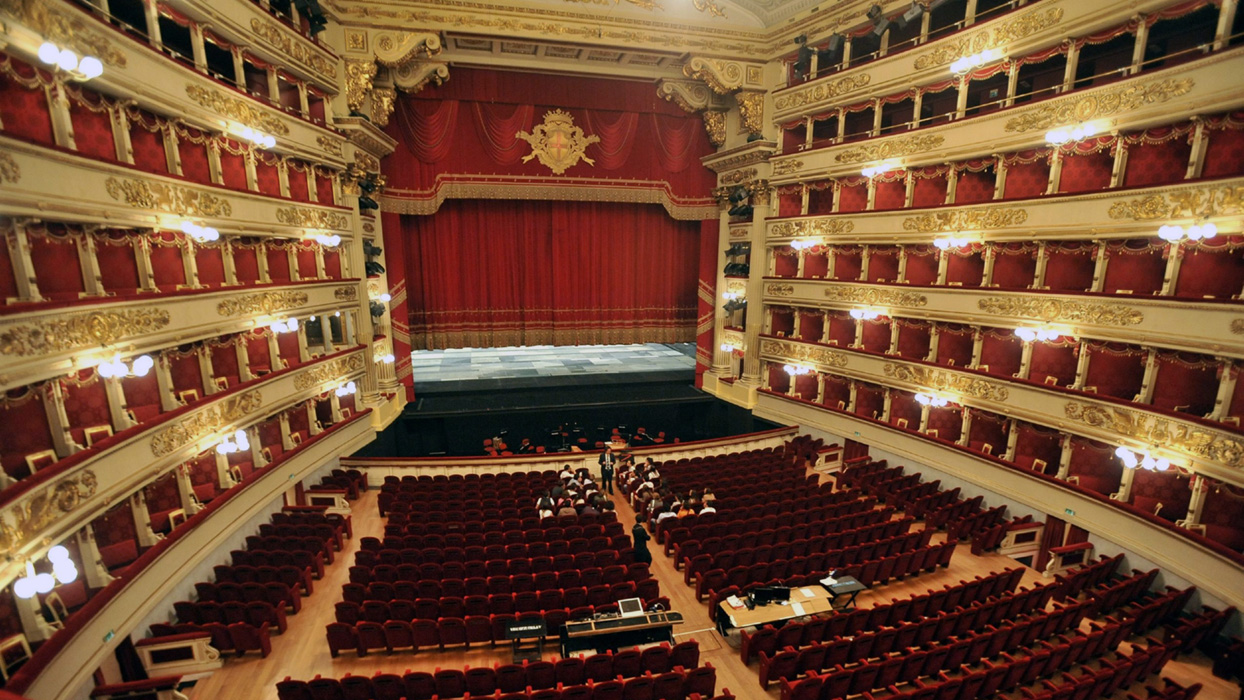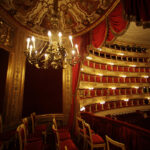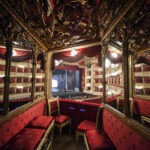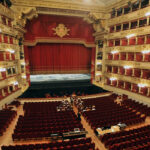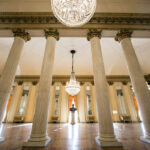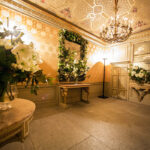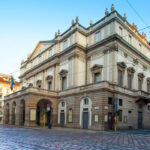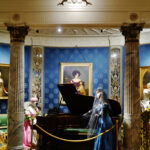Milan – The Theater Alla Scala and The Museo Teatrale
The New Royal Ducal Theater alla Scala, simply known as Teatro alla Scala or colloquially called La Scala, is the main opera house in Milan. Considered one of the most prestigious theaters in the world, it has hosted the top artists in the international fields of opera, ballet, and classical music for 245 years.
The building, designed by Giuseppe Piermarini and inaugurated in 1778 with the opera Europa Riconosciuta composed for the occasion by Antonio Salieri, was built following the destruction of the Ducal Theater in 1776 due to a fire.
Since its founding year, it has been the home of the eponymous choir, orchestra, ballet corps, and since 1982, also of the Philharmonic. The theater complex is located in the homonymous square, next to the Ricordi Casino, home of the Teatro alla Scala Museum.
Teatro alla Scala was built in accordance with a decree of Empress Maria Teresa of Austria, issued at the request of Milanese patrician families led by Giangiacomo Durini, Count of Monza, patron of the “Regio Ducale”, the old Milanese court theater of which Durini was the superintendent, which was destroyed in a fire on February 26, 1776. The same families committed to bearing the expenses for the construction of the new theater in exchange for the renewal of ownership of the boxes. The project was entrusted to the famous architect Giuseppe Piermarini, who also designed the “Teatro Interinale”, a temporary structure built near the church of San Giovanni in Conca, and the Teatro della Cannobiana, with a plan very similar to that of La Scala, but in a smaller size, dedicated to more “popular” shows. The pictorial decoration was executed by Giuseppe Levati and Giuseppe Reina. Domenico Riccardi painted the curtain, depicting, perhaps at the suggestion of Parini, the “Parnaso”.
The theater arose in place of the church of Santa Maria alla Scala, from which it took its name (the church took its name from its founder, Regina della Scala, of the Scaligeri dynasty of Verona), whose demolition works began on August 5, 1776; on May 28, 1778, the first acoustic tests were carried out, and on August 3, in the presence of the governor of Milan, Archduke Ferdinand of Austria-Este, Maria Beatrice d’Este, Count Carlo Giuseppe di Firmian, and Duke Francesco III of Este, the “New Royal Ducal Theater alla Scala” with 3,000 seats was inaugurated with the first absolute performance of Salieri’s Europa riconosciuta.
At that time, the theater was not just a place of entertainment: the stalls were often used for dancing, the boxes were used by the owners to receive guests, eat, and manage their social lives, while gambling was played in the “ridotto” and in another space corresponding to the fifth tier of boxes (among the various games played was roulette, introduced by the impresario Domenico Barbaja in 1805). In fact, since 1788, it had been strictly prohibited to gamble in the city, with the only exception of theaters during performances. The biggest problem in organizing the seasons was to keep the interest of the spectators alive, who were often distracted in the boxes, engaged in other matters, or disturbed in listening to the music by the noise coming from the gambling tables accessible from noon until evening.
In the vicinity of Teatro alla Scala, the Museo Teatrale alla Scala is hosted in the Casino Ricordi. The museum houses a rich collection of paintings related to the world of opera and theater in general, scenic sketches, letters, portraits, autographs, and ancient musical instruments.
The first nucleus of the museum was established in 1911 with the purchase at a Parisian auction of the private collection of the Parisian antiquarian Giulio Sambon, a great theater enthusiast. The purchase was made possible thanks to a public subscription and a government allocation. The subscription fee was 5,000 lire at that time, a considerable sum that is equivalent to approximately 15,000 euros today. The collection aimed to document the history of the spectacle from antiquity to the present day, initially without any relation to the specific activity of the Teatro alla Scala. The museum was officially inaugurated on March 8, 1913.
In the following years, many donations and acquisitions were added to the initial nucleus of the collection. During the Second World War, the collections were moved to safe places for custody, and at the end of the war, after reconstruction, the museum was set up by Fernanda Wittgens. The exhibition area of the museum consists of fourteen rooms and displays marble busts and portraits of numerous composers, conductors, and artists from the European musical field of the last two centuries, as well as ancient musical instruments. Some paintings depict the Teatro alla Scala. A painting by Angelo Inganni represents the facade of La Scala in 1852, when the entrance to the theater was still leaning against the palace, and the square in front had not yet been opened.
Among the valuable works exhibited in the museum are musical instruments, paintings, and marble and bronze busts of famous artists.
The “Livia Simoni” library is annexed to the museum, established at the same time as the museum with a core of about 10,000 volumes of theater history and criticism and musical scores. Today, the library’s book heritage consists of over 150,000 volumes, making it one of the most important libraries in terms of wealth and completeness of collections in the theatrical, lyrical, musical, and dance fields. Rare volumes dating back to the sixteenth century relating to representations of sacred and profane themes and pastoral fables, illustrated editions of the seventeenth century and a large number of autographed and annotated copies are part of the library’s bibliographic heritage.
The archive section of the library preserves extensive collections of scenic sketches, theatrical costumes, photographs, posters and advertisements, opera librettos, letters from actors, directors, composers, and singers who over time have collaborated with the Teatro alla Scala from the seventeenth century to the present day. Numerous handwritten musical scores by Giuseppe Verdi, Gioachino Rossini, Giacomo Puccini, and Gaetano Donizetti are also present. Moreover, some handwritten musical manuscripts of complete operas are preserved, including Giuseppe Verdi’s Requiem Mass and Gioachino Rossini’s Tancredi, as well as scattered pages and sketches by Mozart, Beethoven, Puccini, Donizetti, and Bellini.

